

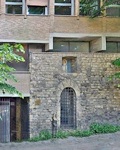
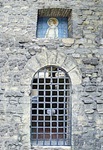
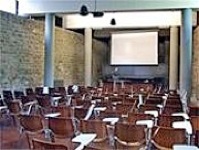
In 1330, Pope John XXII approved the creation of the new parish of Sant’ Elisabetta, to serve the rapidly growing suburb of la Conca. This parish, which was the last to be created in Perugia in the middle ages, was enclosed by a new stretch of walls that was built in 1327-42. Its church was dedicated to St Elizabeth of Hungary, who had been canonised in San Domenico in 1235.
Excavations in 1926 to recover a Roman mosaic (see below) in what had been the orchard of Sant’ Elisabetta also uncovered inscriptions that suggested that this mosaic had been incorporated into an early Christian church on the site that had remained in use until the 6th century.
Sant’ Elisabetta was demolished to make way for the university buildings in 1903. Its role as a parish church passed at this point to SS Sebastiano e Rocco.
The side wall of the church has been embedded into the new university building, and adorned with a majolica representation of St Elizabeth. Part of the original interior is still discernible in the room behind it.
Art from the Church
Frescoes (14th century)
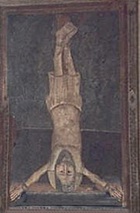
A number of other fragments in the collection of the gallery are described and illustrated in the website of Musei d’ Italia. They included the important depiction of the “miracle of the roses”, which is among a number that are attributed to the Maestro Ironico: in the legend, Louis IV, Landgrave of Thuringia, catches his wife, St Elizabeth of Hungary taking food for the poor against his orders but, as he points an accusing finger, the food changes to roses.
St Onuphrius and Scenes from his Life (1672)
This panel, which is dated by inscription, depicts the standing hermit saint surrounded by 14 scenes from his life. It came from an altar in Sant’ Elisabetta that belonged to the Collegio dei Tintori (dyers’ guild), whose patron saint was St Onuphrius. It is now in the sacristy of SS Sebastiano e Rocco. It is attributed to Pietro Montanini on stylistic grounds, not least because of its similarity to a painting of this saint by Montanini in SS Sebastiano e Rocco.
Roman Mosaic (2nd century AD)
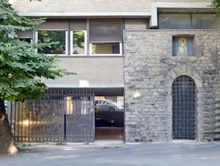
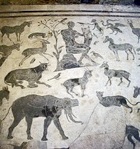
The mosaic portrays Orpheus charming an audience of animals by playing the lyre while seated naked on a rock under a laurel tree. It probably came from the public baths outside the city walls, and provides a rare window on the social life of Perusia Augusta.

